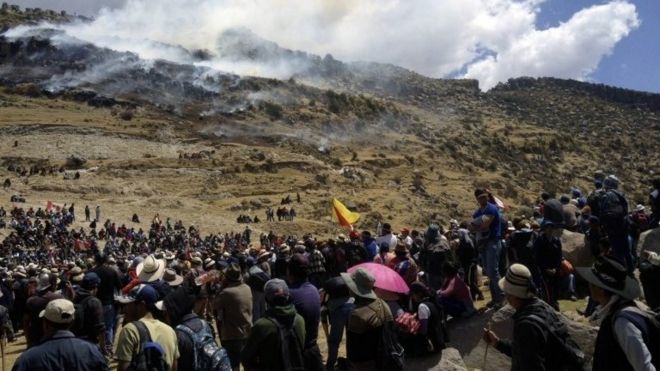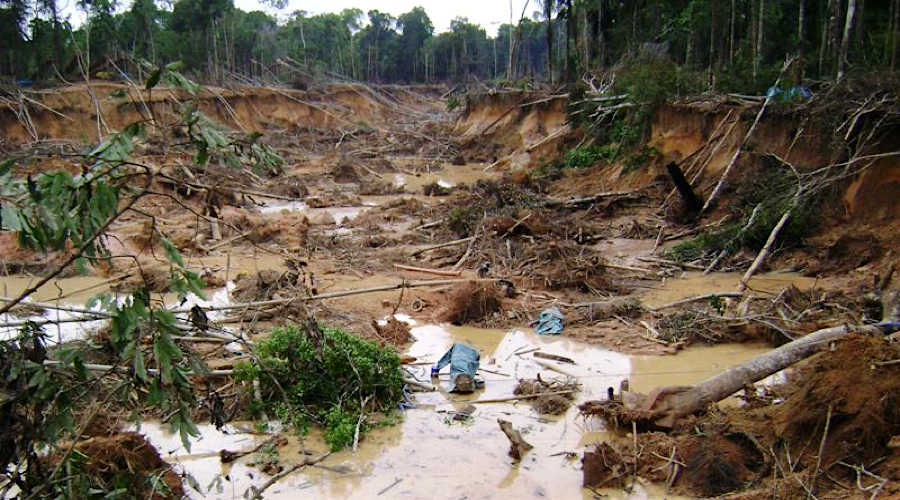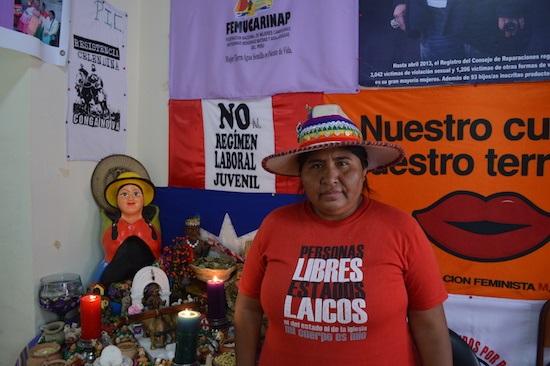Author: Justin Anderson
Co-Authors: Kelsey Newhook, Ella MacKinnon, Alina Schroeder, Eileen Molloy
According to a 2006 survey conducted by the Instituto Nacional de Estadística e Informática (INEI), 59.5% of Peruvians self identify as Mestizo, 22.7% as Quechua, 1.7% as Aymara, 1.8% as Amazonian, 1.6% as Black/Mulatto, 4.9% as white, and 6.7% identify as other. Also, as of 2016, there is an estimated total of 15 uncontacted Amerindian tribes that live in Peru. (Peru Population 2017)
Indigenous Groups of Peru
The Quechua are actually a series of several different ethnic groups, all tied together by their use of the same language, Quechua. In Peru, the two major Quechua speaking groups are the Q’ero and the Wankas (or Huancas). The Q’ero are subsistence farmers who live high in the Andes at an elevation between 12,000 and 15,000 feet. Due to the remote nature of Q’ero communities, they are very vulnerable to environmental change. Drought, excessive rainfall, or potato disease could cause their crops to fail which would have dire consequences on Q’ero communities. (Quechua) Wankas people occupy the Southern part of the Junin region located in central Peru. Quechua is the second official language of Peru and is spoken by roughly 16% of the population. In recent years the Peruvian government has made efforts to teach indigenous languages throughout the country in the hopes that doing so will prevent those languages from dying out. (Peru Is Fighting) The Aymara are the indigenous people of the Altiplano. They live high in the Andes mountain on Lake Titicaca on and around the Bolivian border with Peru. There are about 500,000 Aymara Indians living in Peru making them one of the largest group of indigenous people in Peru, be hide the Quechua. The elevation of the region makes farming difficult. (Aymara)
Issues Regarding Indigenous Groups
In recent years indigenous groups have come into conflict with both mining and timber operations as the need for resources has increased. These operations could destroy the ancestral lands of these people and by extension, their way of life. (video)
Many of the difficulties that indigenous communities face continue to persist. As recent as last month a the AIDESEP, the national indigenous organization in Peru, has taken actions to sue Peru’s Ministry of Culture for allowing Canadian oil companies to explore the Yavari Tapiche, an proposed reserve for indigenous people. The AIDESEP had fought for the creation of the reserve for 14 years with no success. (Peru: Indigenous)
Summary Factoids
What percentage of Peruvians speak Quechua? 16% of Peruvians speak Quechua.
What are the two major groups of indigenous Peruvians who speak Quechua? The Q’ero and the Wankas are the two major groups that speak Quechua.
What percentage of Peru’s population identifies as Aymara? 1.7% of Peruvians self identify as Aymaran.
Citation
“Aymara.” Countries and Their Cultures. N.p., n.d. Web. 05 Mar. 2017.
<http://www.everyculture.com/wc/Afghanistan-to-Bosnia-Herzegovina/Aymara.html>.
“Peru: Indigenous people sue government over uncontacted tribe.” Peru: Indigenous people sue government over uncontacted tribe – Survival International. N.p., 09 Feb. 2017. Web. 05 Mar. 2017.
“Peru Is Fighting to save 17 Languages That Are in Danger of Dying out.” TheJournal.ie. N.p.,
11 Feb. 2017. Web. 05 Mar. 2017. <http://www.thejournal.ie/peru-fight-indigenous-languages-3226618-Feb2017/>.
“Peru Population 2017.” Peru Population (2017). N.p., 08 Feb. 2017. Web. 05 Mar. 2017.
<http://worldpopulationreview.com/countries/peru-population/>.
“Quechua: The cultural heart of the Andes | Peru For Less.” The Latin American Travel Blog.
N.p., 20 May 2016. Web. 05 Mar. 2017. <https://www.peruforless.com/blog/quechua-cultural-heart-andes/>.












